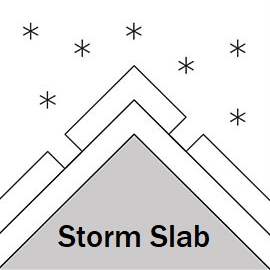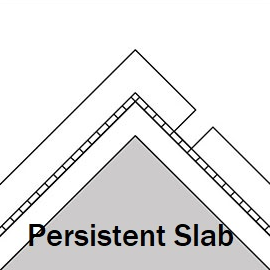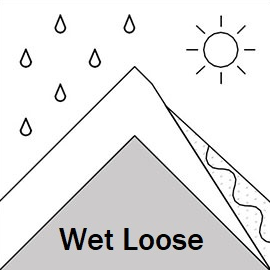Gudauri
Natural avalanches are possible, human-triggered avalanches are likely. Small avalanches in many areas, or large avalanches in specific areas, or very large avalanches in isolated areas.
The recent new snow is unstable in some areas. There are also fragile layers under the recent snow which could create large avalanches. Fresh snow arriving tonight and tomorrow is expected to make the conditions more dangerous. Warm temperatures during the day, some sunny breaks bring the risk of wet snow avalanches, which may also trigger large slab avalanches. Avoid steep high-consequence terrain until the snowpack stabilises.
Forecast issued at: 21 March 2024 08:00
Forecast valid until: 22 March 2024 08:00
Forecaster: Luke Frisken
High Alpine
> 2600m
3 Considerable
Dangerous avalanche conditions. Careful snowpack evaluation, cautious route-finding and conservative decision-making essential.
Alpine
2000m - 2600m
3 Considerable
Dangerous avalanche conditions. Careful snowpack evaluation, cautious route-finding and conservative decision-making essential.
Sub Alpine
< 2000m
2 Moderate
Heightened avalanche conditions on specific terrain features. Evaluate snow and terrain carefully; identify features of concern.
Avalanche Problems
Storm Slab

The recent new snow sits above a melt-freeze crust which might not be well bonded at lower elevations. There are also weak snow layers under this crust at higher elevations that could break under the storm snow. Be wary of steep areas where these layers could fail under your weight.
| Sensitivity | The specific avalanche problem type is difficult to trigger with a human rider. |
| Distribution | Specific areas, with common characteristics. Evidence for instabilities exists, but it is not obvious and finding it requires careful observations. |
| Time of Day | All day |
| Trend | Deteriorating |
| Confidence | Moderate |
Persistent Slab

Weak, sugary snow has been found in the upper and mid snowpack at higher elevations on various aspects. Whumphing has been observed in some places. Large slab avalanches could be triggered by the additional weight of new snow or by a smaller surface avalanche. These problems will be worse in the north of the region and areas where the snow is shallower.
| Sensitivity | The specific avalanche problem type is reactive to human rider triggers. Easy to trigger with ski cut. |
| Distribution | Specific areas, with common characteristics. Evidence for instabilities exists, but it is not obvious and finding it requires careful observations. |
| Trend | Deteriorating |
| Confidence | Moderate |
Loose Wet

Wet snow and rain below 2000 m, plus some sun at times causing a greenhouse effect, means small loose wet slides could occur naturally or triggered by riders in steep areas. These may also be the trigger for a larger slab avalanche. Be very aware of terrain traps around you.
| Sensitivity | The specific avalanche problem type is reactive to human rider triggers. Easy to trigger with ski cut. |
| Distribution | Specific areas, with common characteristics. Evidence for instabilities exists, but it is not obvious and finding it requires careful observations. |
| Time of Day | All day |
| Trend | No change |
| Confidence | Moderate |
Recent Avalanches and Snowpack
Recent avalanche activity:
20 March - Natural size 3 storm slab, S side of Sadzele 3200 m, and another nearby size 3 avalanche on SW side of Konstitucion (Black Ridge) at 3100m. Both of these were likely triggered by smaller loose wet slides from above. Several recent natural slab avalanches on Lomisa Ridge (NE aspect). A report of a probable size 2 skier triggered slide on a shady aspect in Kobe valley. Multiple small loose wet slides on S aspects.
19 March - Skier triggered size 1 storm slab, Kobi valley, NE, 2900 m.
18 March - Natural size 2 loose wet / storm slab SW aspect 3100 m near Sadzele. Multiple skier-triggered size 1 storm slabs, 2500 m NE, Lower Kobi valley.
Glide slabs continue to be active on multiple aspects (more commonly E, S and W), some up to size 2. These can release at any time - if you see cracks in the snow, do not stop under these areas!
Snowpack:
Another 20 cm of new snow fell during the previous storm, adding to the 30-40 cm that fell on Saturday. At lower elevations this snow is settling fast. The new snow is sitting on a recent melt-freeze crust in many areas, even on N aspects, and below this is a combination of facet layers and crusts - the top two facet layers are creating whumphing and very easy failures in testing. You should check the snow carefully before riding as these layers have potential to form quite big avalanches with light loads. Cornices in some locations along ridge tops are getting large (particularly on Lomisa Ridge), treat them with respect.
Weather
Light S winds trending W overnight. Around 15 cm of new snow tonight. Freezing level 2000 m.
Disclaimer
Our avalanche forecasters are internationally qualified and experienced professionals, and data is provided by skilled observers. We encourage you to make your own observations and decisions, without relying solely on our forecast, since any forecast is a generalised 'best guess', and in certain cases it might be inaccurate. We can not be held liable for any actions you take in the backcountry that may result in injury, loss or death.